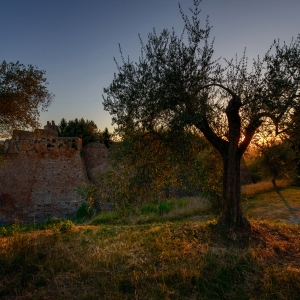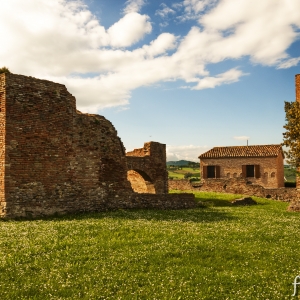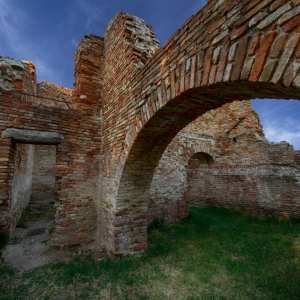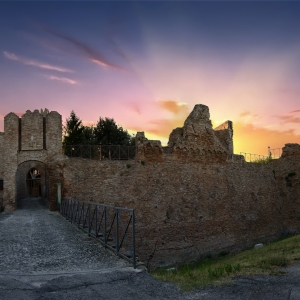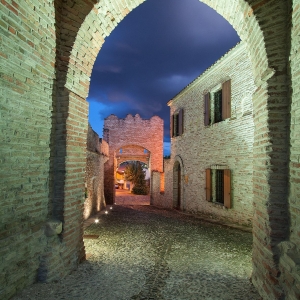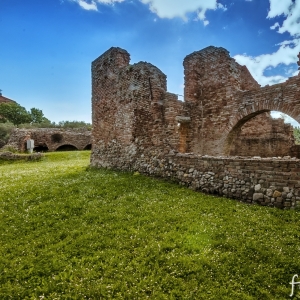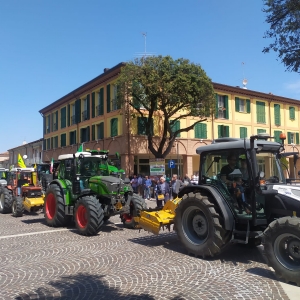Open today
Malatesta Castle of Coriano
Coriano with its fortification stands in an isolated place. Coriano was a fortified centre documented as early as the end of the 12th century, endowed with its own magistracy, with a large territory, located on a slight hill (102 metres above sea level), from which it is still possible to enjoy the view of its vast and delightful panorama immersed in the nature of the Romagna hinterland.
The castle or castrum is a rather unusual
fortification; in fact, it is not a fortress built for the exclusive military or residential use of a single lord, nor is it the size of a fortified village. The layout of the castle, whose imposing ruins remain on a natural elevation, is outside the modern town centre.
Today, an important gate tower survives, already equipped with a drawbridge and surmounted by a quadrangular tower with a coat of arms and traces of corbels and battlements on the top. Still visible are a first and second section of wall, forming part of an irregular polygonal wall, and a second gate with a pointed arch. In
Coriano, during the restoration of the castle, one of the few scientific
investigations ever carried out on fortified complexes. A recovery plan that focused on conservation has returned a fortified complex of great historical value to Coriano. Significant structural remains and materials from the castle excavations have been found: ceramics, glass, metal materials, weapons, coins, all elements that help to better understand life inside the castle, set up as a permanent exhibition in a house in the castle.
Coriano was in the possession of the Carpegna family until 1209, when it passed to the Church of Ravenna, which in turn leased the fortified centre to the Malatesta family in 1356. For a certain period, the Castle of Coriano was one of the most important fortified complexes in the area, thanks to the substantial extension works begun by Roberto Malatesta in the second half of the 15th century. Roberto Malatesta modified the layout of the entire fortification, rebuilding the surrounding wall, expanding the perimeter and building new bastions.
From 1504, Coriano underwent several changes of hands, first by the Venetians, then it was sacked and partly destroyed by the Spanish in 1512, then it became the possession of Pope Clement VIII, who assigned it to the Sassatelli Brothers of Imola and finally became the property of the Municipality of Rimini in 1605.
In the 16th century, the small castle was inhabited by peasants, but there were also artisans, a chirurgus, a shoemaker and a priest.
Following the 1672 earthquake, the castle suffered damage and subsequent signs of degradation, which led the community council to intervene by lowering the walls in 1728.
In 1805 Coriano was declared a third class municipality and the castle housed the prisons.
In 1882 the castle suffered a fire. Subsequently its badly damaged
fortifications survived the wear and tear of time and the devastation suffered during World War II in 1944, when in the breakthrough of the German Gothic Line Coriano was razed to the ground and reduced to a heap of rubble.


